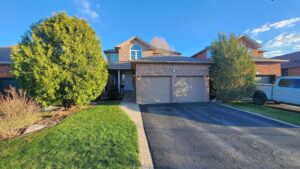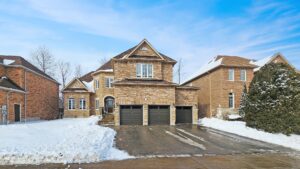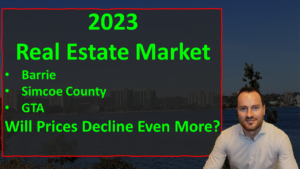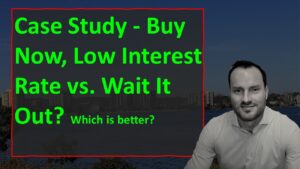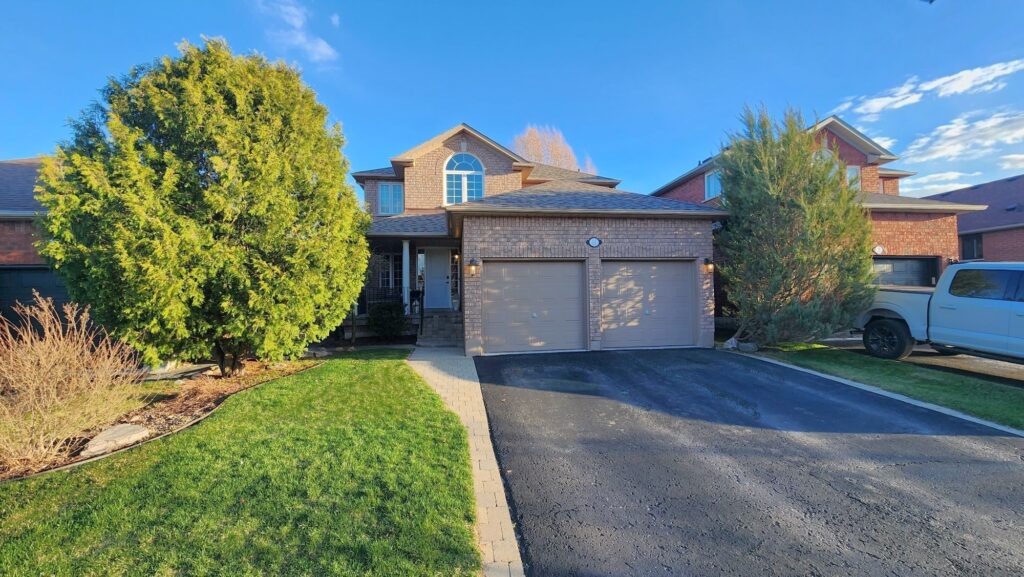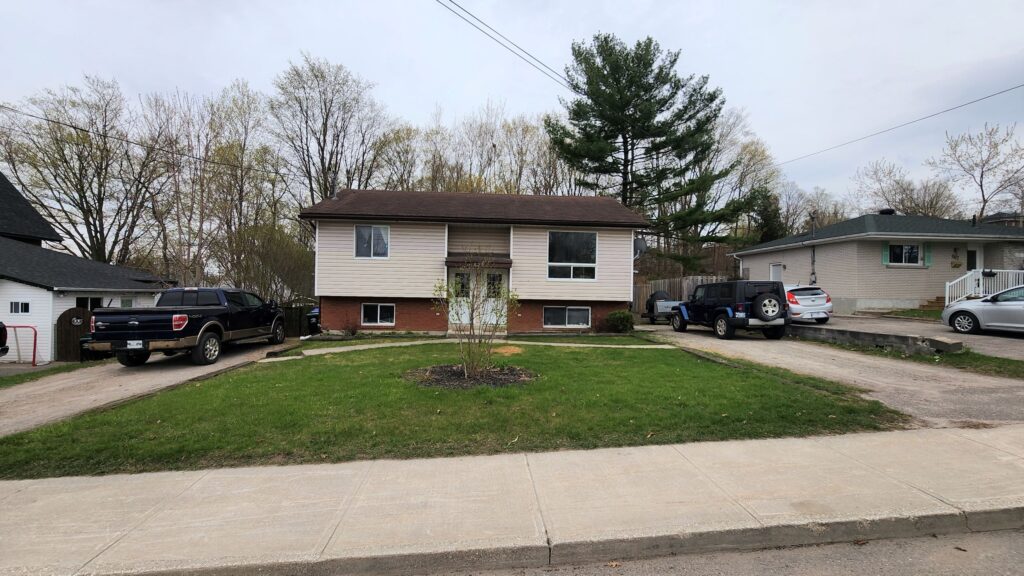What is the real estate market going to do in 2022? Will housing prices drop and if so what would it look like if you were to wait it out and buy later in the year or buy now with potentially a lower interest rate?
With fixed rate interest rates on the rise across Canada as of late and just this past week a 50 basis point increase to the overnight rate set by the Bank of Canada, it is highly probable that mortgage payments are going to look much different in the coming months. Based on my experience this should have a profound impact on real estate prices. Many will be wrestling with the decision to wait and hope for prices to drop or to buy now and possibly lock in a lower interest rate.
Which situation or scenario is best?
That is what we are going to look at right now.
We are going to use a duplex as the example as it will highlight the differences in cash flow which will further emphasize the impacts of rising interest rates on mortgage payments, but this example would hold true for any purchase made.
Let’s look at three different examples/ scenarios.
Scenario #1: Buy property right now with current interest rates
Buy property for $950,000. 20% down payment, mortgage amortized for 25 years at 3.5%
Scenario #2: Wait a few months, hope to buy property at reduced price but higher interest rate
Buy property for $830,000, 20% down payment, mortgage amortized for 25 years at 4.3%
Scenario #3: Buy property right now with locked in rate from a month or so earlier
Buy property for $950,000, 20% down payment, mortgage amortized for 25 years at 2.8%
Assumptions for all three scenarios:
- Hold for 5 years
- Property is duplex with same rents and expenses
- $1800 all inclusive up
- $1650 all inclusive down
*It should be noted I am not a mortgage professional, and these examples are intended for educational purposes only. I do not know what sales prices or mortgage rates will be in a few months. These are completely made-up scenarios. Current Mortgage rates were based on rates published on ratehub.ca.
Alright let’s get to it.
Scenario #1 – Buy property right now with current interest rates
Purchase Price = $950,000
Down Payment = 20%, $190,000
Mortgage Amount = $760,000
Mortgage Amortized for 25 years at 3.5%
Monthly Mortgage Payment = $3,794.45
Total Cash Needed = $208,575 (includes down payment, land transfer tax, legal, inspection costs, etc)
Net Operating Income = $30,339
Monthly Cashflow = – $1,266.20
Annual Cashflow = – $15,194
Return on investment (Includes cashflow and principal reduction, does not include appreciation or depreciation)
Year 1 = 1.9% ($4,031)
Year 2 = 4.44% ($5,239)
Year 3 = 7.55% ($6,480)
Year 4 = 11.27% ($7,755)
Year 5 = 15.62% ($9,065)
After 5 years holding, property has generated $32,570 which represents a 15.6% return of your initial cash needed of $208,575 and the principal amount owing on the mortgage after 5 years of payments would be $655,728.
Scenario #2 – Wait a few months, hope to buy property at reduced price but higher interest rate
Purchase Price = $830,000
Down Payment = 20%, $166,000
Mortgage Amount = $664,000
Mortgage Amortized for 25 years at 4.3%
Monthly Mortgage Payment = $3,601.60
Total Cash Needed = $182,175 (includes land transfer tax, legal, inspection costs)
Net Operating Income = $30,339
Monthly Cashflow = – $1,073.35
Annual Cashflow = – $12,880
Return on investment (Includes cashflow and principal reduction, does not include appreciation or depreciation)
Year 1 = 1.2% ($2,127)
Year 2 = 2.98% ($3,310)
Year 3 = 5.47% ($4,531)
Year 4 = 8.65% ($5,790)
Year 5 = 12.54% ($7,090)
After 5 Years Holding, property has generated $22,849 which represents a 12.5% return of your initial cash needed of $182,175 and the principal amount owing on the mortgage after 5 years of payments would be $581,021.
Scenario #3 – Buy property right now with locked in rate from a month or so earlier
Purchase Price = $950,000
Down Payment = 20%, $190,000
Mortgage Amount = $760,000
Mortgage Amortized for 25 years at 2.8%
Monthly Mortgage Payment = $3,519.13
Total Cash Needed = $208,575 (includes land transfer tax, legal, inspection costs)
Net Operating Income = $30,339
Monthly Cashflow = – $990.88
Annual Cashflow = – $11,891
Return on investment (Includes cashflow and principal reduction, does not include appreciation or depreciation)
Year 1 = 4.4% ($9,246)
Year 2 = 9.4% ($10,369)
Year 3 = 14.93% ($11,519)
Year 4 = 21.01% ($12,694)
Year 5 = 27.68% ($13,897)
After 5 Years Holding, property has generated $57,726 which represents a 27.7% return of your initial cash needed of $208,575 and the principal amount owing on the mortgage after 5 years of payments would be $647,092.
Comparing the three:
Lowest monthly mortgage payment
(3) $950,000, 20% down payment, mortgage amortized for 25 years at 2.8%
Scenario 1 = $3,794.45
Scenario 2 = $3,601.60
Scenario 3 = $3,519.13
Highest 5 year return on investment
(3) $950,000, 20% down payment, mortgage amortized for 25 years at 2.8%
Scenario 1 = 15.6% or $32,570
Scenario 2 = 12.5% or $22,849
Scenario 3 = 27.7% or $57,726
Lowest Principal amount owing after 5 years
(2) $800,000 20% down payment, mortgage amortized for 25 years at 4.3%
Scenario 1 = $655,728
Scenario 2 = $581,021
Scenario 3 = $647,092
Highest Total Cash Needed
(Tie 1 & 3)
Scenario 1 = $208,575
Scenario 2 = $182,175
Scenario 3 = $208,575
Net Cash Flow
(3) $950,000, 20% down payment, mortgage amortized for 25 years at 2.8%
Scenario 1:
Monthly = – $1,266.20
Annual = -$15,194
Scenario 2:
Monthly = – $1,073.35
Annual = -$12,880
Scenario 3:
Monthly = -$990.88
Annual = -$11,891
Summary:
These three scenarios are really interesting. Based on the results, a solid case can be made for those with locked in interest rates to get into the market right now, even if it means buying at an increased price on the assumption that prices will potentially fall with increased borrowing costs.
Monthly mortgage payment is less, ROI is considerably higher and net cash flow, all be it at a monthly loss is less than the other two scenarios.
Those buyers with locked in interest rates that are considerably lower then what is currently available or what is assumed to be on the way in coming months is what is going to power the spring market and then all those buyers who are still riding the variable rate train. I for one am on that variable rate train. With today’s increase we should see the variable rate get somewhere in the 2% to 2.3% range depending on your lender.
Thanks for reading. For more information on how you can work with me, schedule a call or reach out.
Jeff

